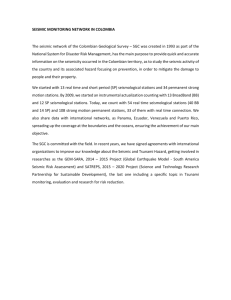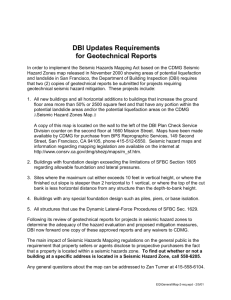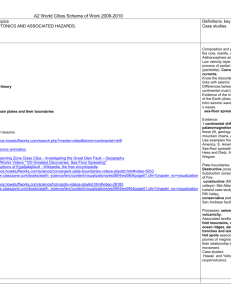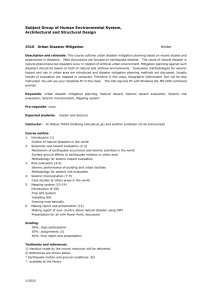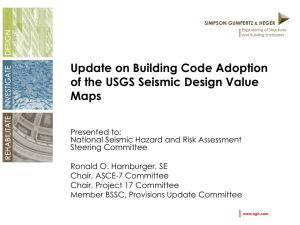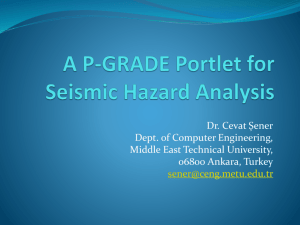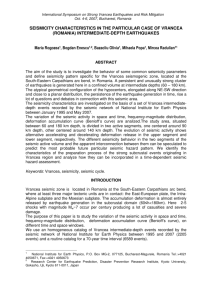3.6
advertisement
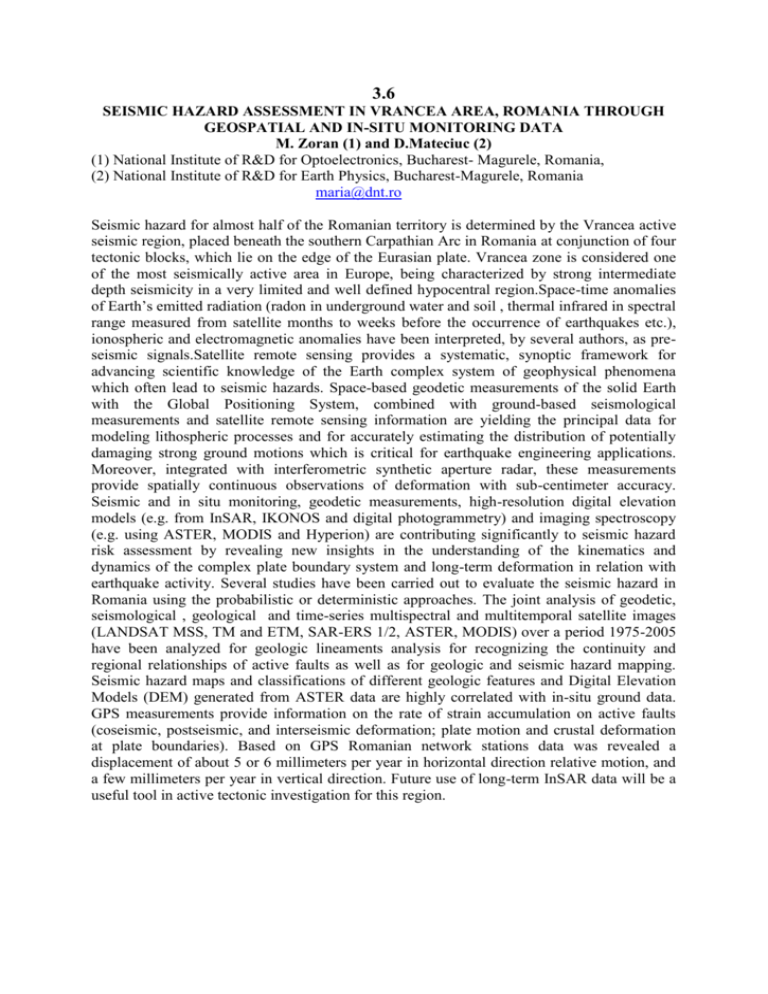
3.6 SEISMIC HAZARD ASSESSMENT IN VRANCEA AREA, ROMANIA THROUGH GEOSPATIAL AND IN-SITU MONITORING DATA M. Zoran (1) and D.Mateciuc (2) (1) National Institute of R&D for Optoelectronics, Bucharest- Magurele, Romania, (2) National Institute of R&D for Earth Physics, Bucharest-Magurele, Romania maria@dnt.ro Seismic hazard for almost half of the Romanian territory is determined by the Vrancea active seismic region, placed beneath the southern Carpathian Arc in Romania at conjunction of four tectonic blocks, which lie on the edge of the Eurasian plate. Vrancea zone is considered one of the most seismically active area in Europe, being characterized by strong intermediate depth seismicity in a very limited and well defined hypocentral region.Space-time anomalies of Earth’s emitted radiation (radon in underground water and soil , thermal infrared in spectral range measured from satellite months to weeks before the occurrence of earthquakes etc.), ionospheric and electromagnetic anomalies have been interpreted, by several authors, as preseismic signals.Satellite remote sensing provides a systematic, synoptic framework for advancing scientific knowledge of the Earth complex system of geophysical phenomena which often lead to seismic hazards. Space-based geodetic measurements of the solid Earth with the Global Positioning System, combined with ground-based seismological measurements and satellite remote sensing information are yielding the principal data for modeling lithospheric processes and for accurately estimating the distribution of potentially damaging strong ground motions which is critical for earthquake engineering applications. Moreover, integrated with interferometric synthetic aperture radar, these measurements provide spatially continuous observations of deformation with sub-centimeter accuracy. Seismic and in situ monitoring, geodetic measurements, high-resolution digital elevation models (e.g. from InSAR, IKONOS and digital photogrammetry) and imaging spectroscopy (e.g. using ASTER, MODIS and Hyperion) are contributing significantly to seismic hazard risk assessment by revealing new insights in the understanding of the kinematics and dynamics of the complex plate boundary system and long-term deformation in relation with earthquake activity. Several studies have been carried out to evaluate the seismic hazard in Romania using the probabilistic or deterministic approaches. The joint analysis of geodetic, seismological , geological and time-series multispectral and multitemporal satellite images (LANDSAT MSS, TM and ETM, SAR-ERS 1/2, ASTER, MODIS) over a period 1975-2005 have been analyzed for geologic lineaments analysis for recognizing the continuity and regional relationships of active faults as well as for geologic and seismic hazard mapping. Seismic hazard maps and classifications of different geologic features and Digital Elevation Models (DEM) generated from ASTER data are highly correlated with in-situ ground data. GPS measurements provide information on the rate of strain accumulation on active faults (coseismic, postseismic, and interseismic deformation; plate motion and crustal deformation at plate boundaries). Based on GPS Romanian network stations data was revealed a displacement of about 5 or 6 millimeters per year in horizontal direction relative motion, and a few millimeters per year in vertical direction. Future use of long-term InSAR data will be a useful tool in active tectonic investigation for this region.
